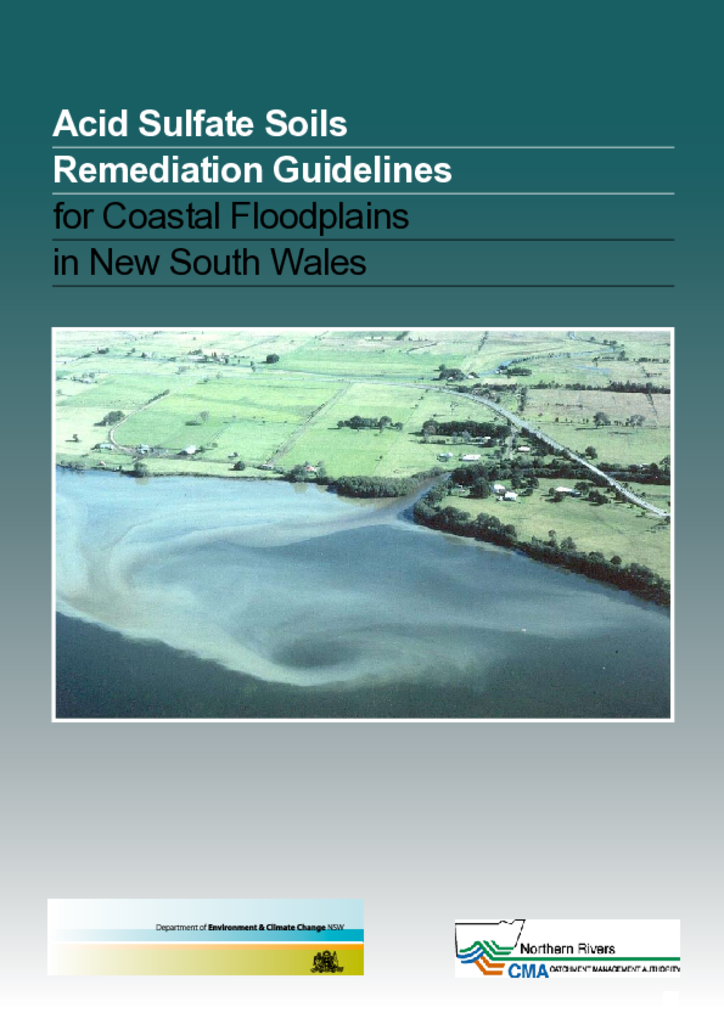Acid Sulfate Soils Remediation Guidelines for Coastal Floodplains in NSW
These guidelines have been developed to provide a framework for designing the most effective acid sulfate soil remediation projects for low-elevation floodplain sites such as broadacre agricultural land – particularly (former) freshwater backswamps and saline wetlands.
The guidelines provide information for developing remediation strategies based on the physical characteristics of the floodplain landscape.
Contents
Introduction: How to use these guidelines
Part 1: Acid sulfate remediation and floodplain management – introduces the relevant government policy framework and science behind acid sulfate soil remediation
Part 2: Developing a remediation plan – provides information for preparing remediation plans
Part 3: Implementing a remediation plan – addresses the operational issues in implementing a remediation plan
Part 4: Monitoring a remediation plan – discusses soil, groundwater and surface water monitoring
Part 5: Securing land management change in a remediation project – considers how a remediation project can become a sustainable solution to floodplain management
Appendices:
- Hydraulic conductivity – simple field test for shallow coastal acid sulfate soils
- Government policy context
- Legal issues
- Glossary and definitions
- List of acronyms
